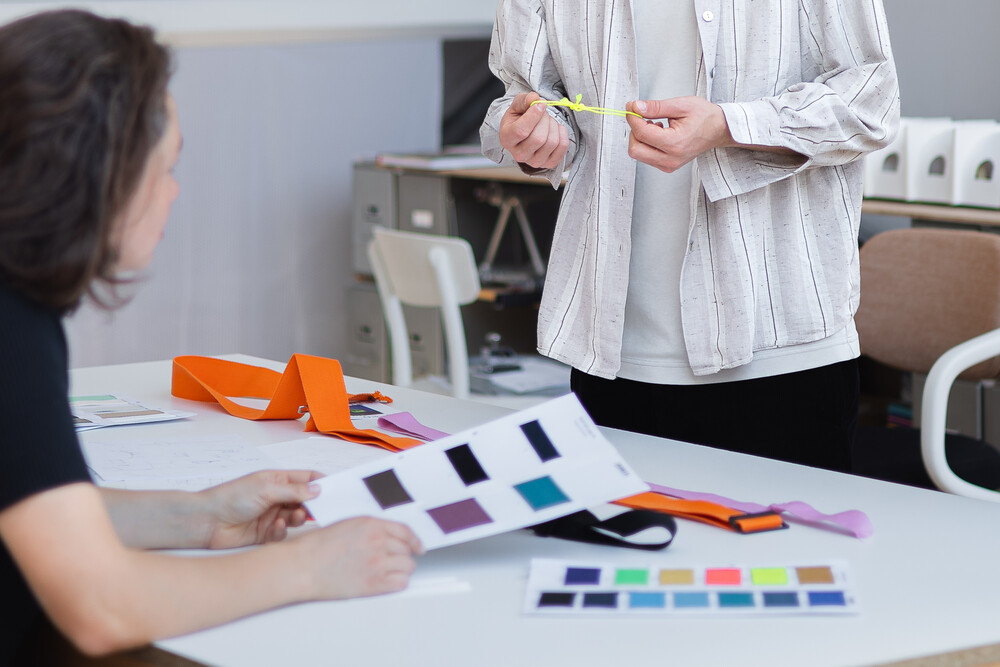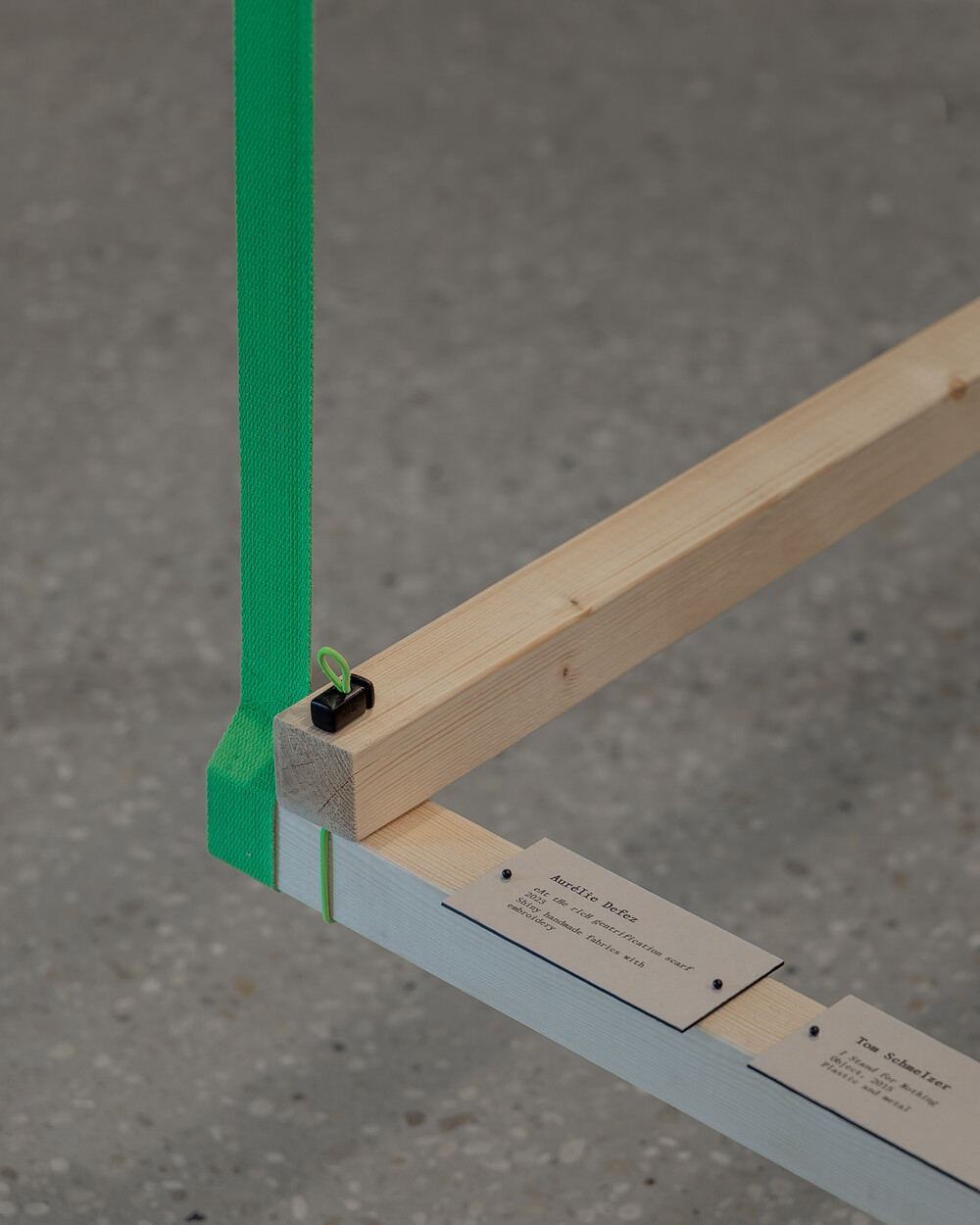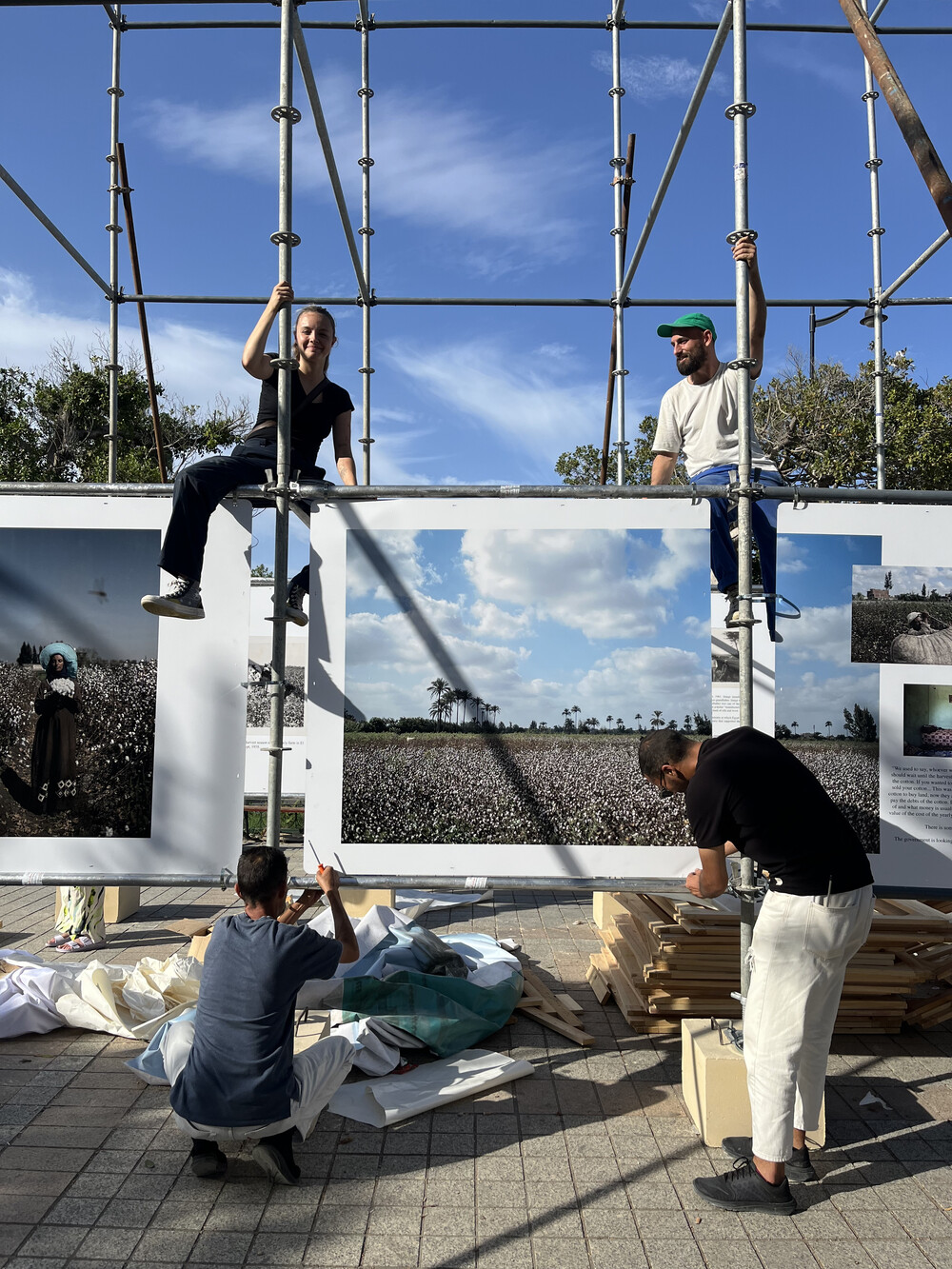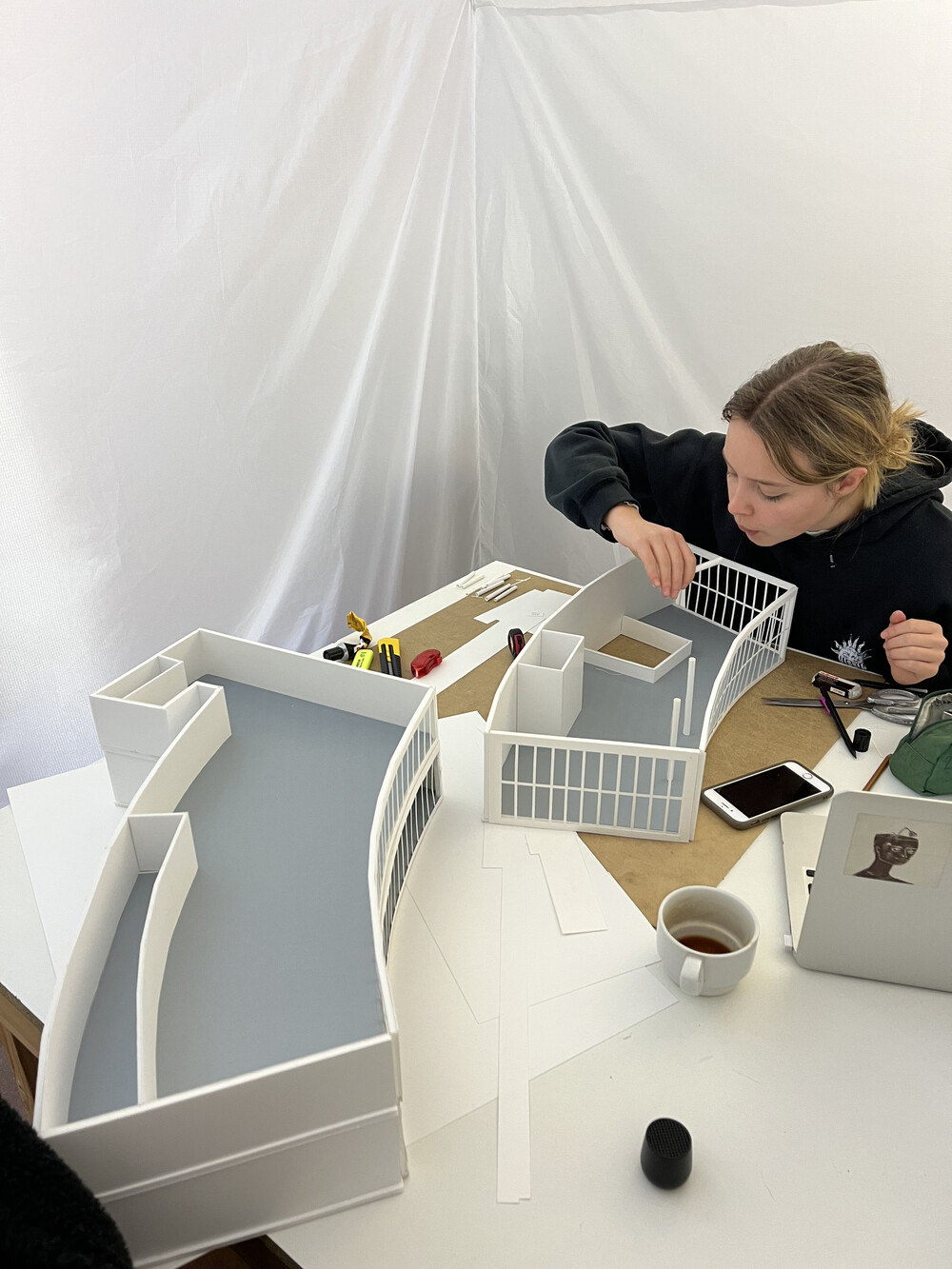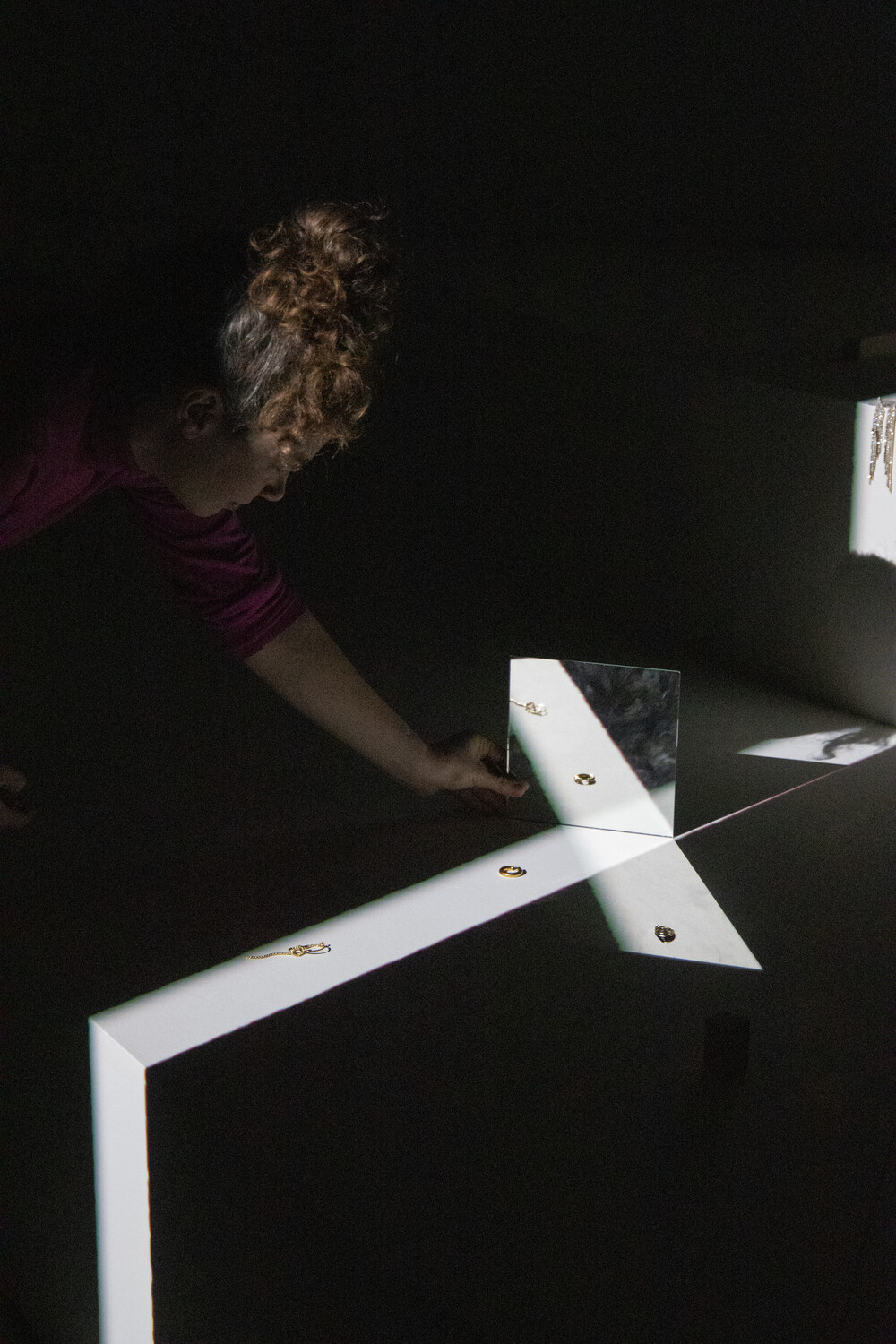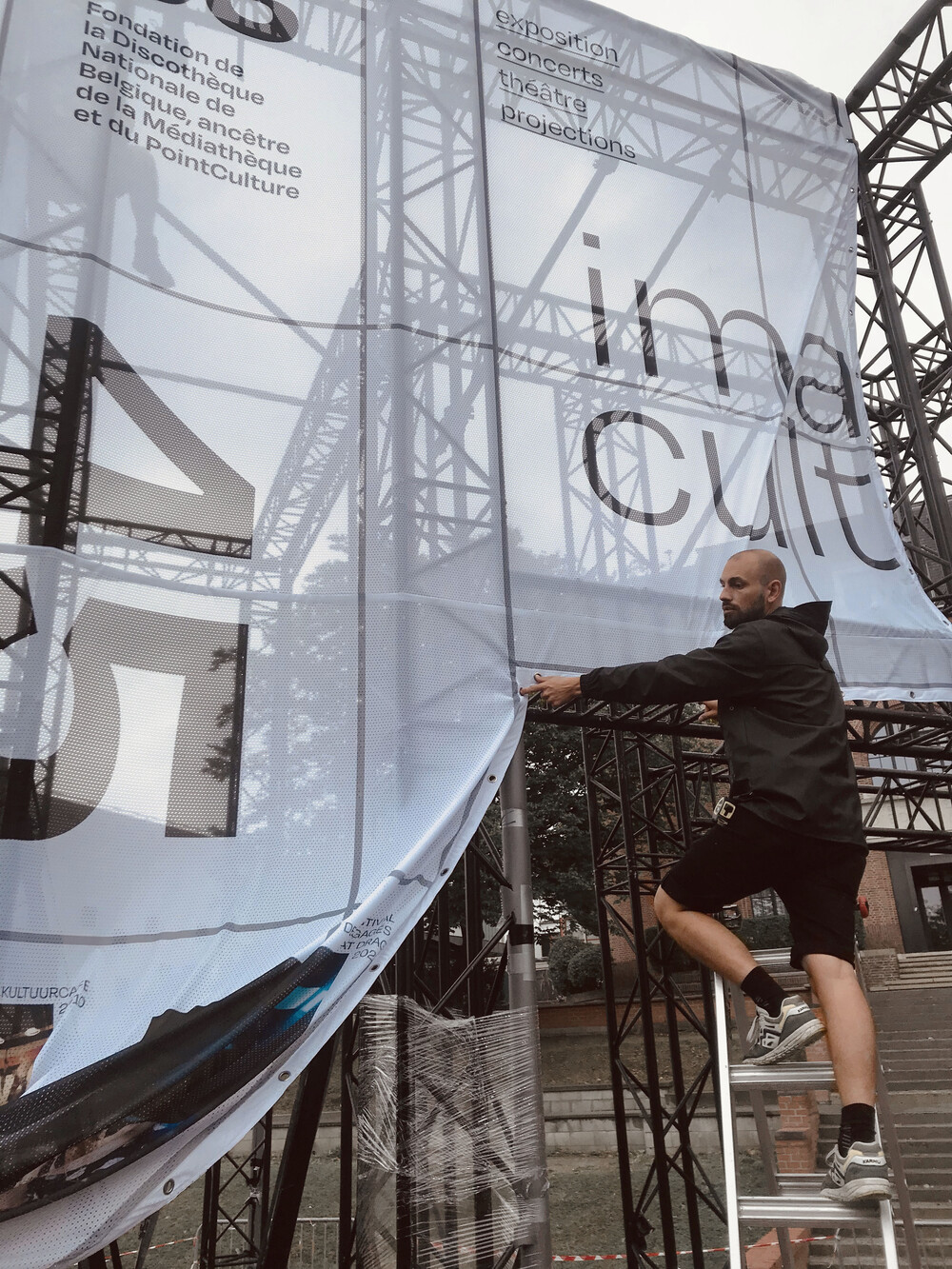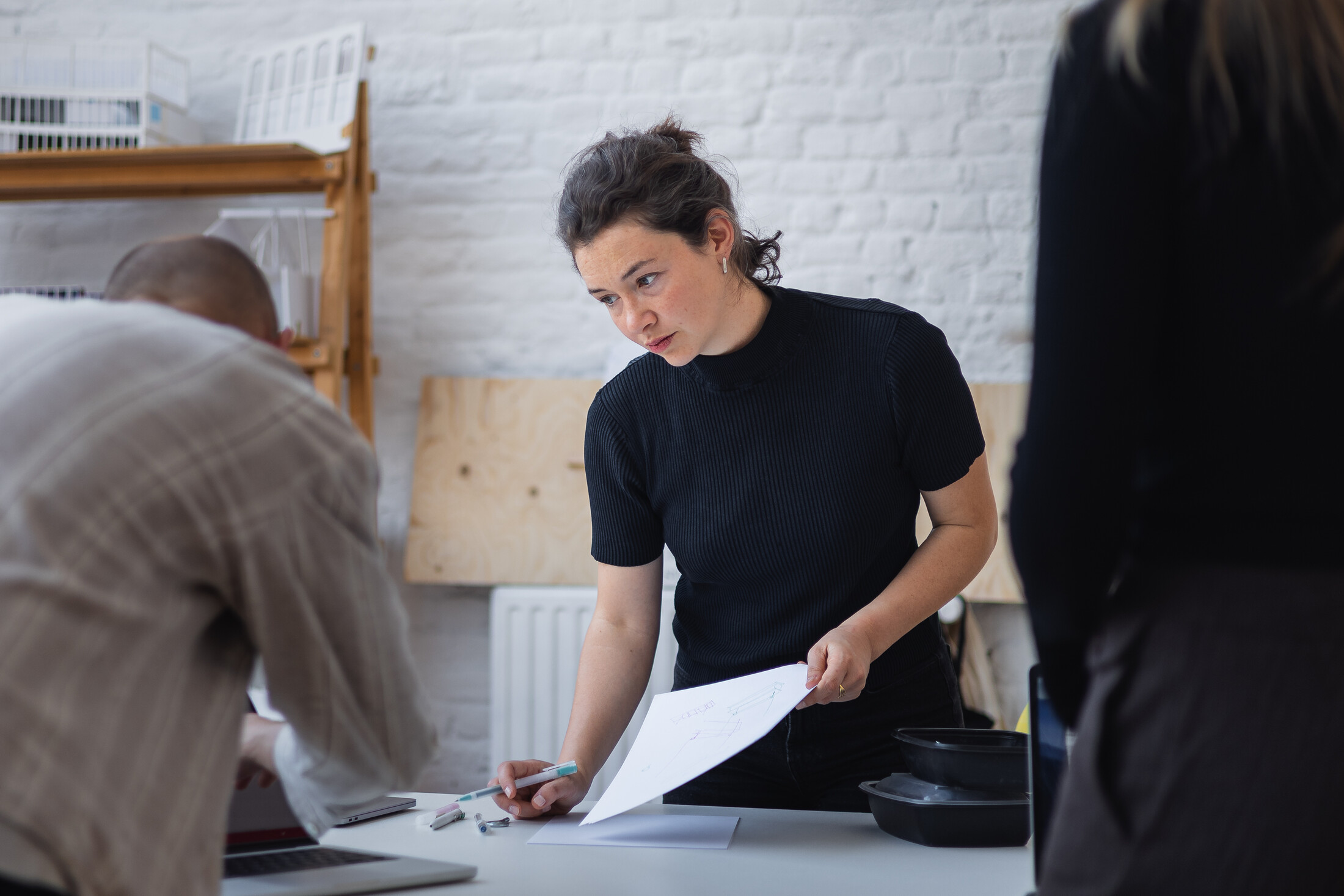
"Supporting ecodesign is more a political commitment than an economic one."
Interview with Marie Douel
MAD meets Marie Douel on the top floor of the communication agency TAVU. Founded in 2019, Studio Marie Douel specialises in exhibition design and works on an international level with organisations such as: Centre d'innovation et de design in Grand-Hornu, Fundación Telefónica in Madrid, Musée des Arts et Métiers in Paris and Musée d'histoire naturelle in Fribourg.
Marie Douel conceives of space as a story. Surrounded by models and examples, she talks about the challenges of her trade and reminds us that although everything starts with a drawing, nothing can be achieved without a close-knit team. Today, Bavo Gladiné and Lolà Mancini joined her studio.
In its fourth collaboration with MAD Brussels, the studio is responsible for the exhibition design of Matching Seats, and Marie Douel takes this opportunity to reflect on her practice.

Tell us how Marie Douel Studio was born, from tapestries to set design.
"I began my studies in upholstery at the Ecole Boulle in France, where I learned to make chairs and curtains using traditional methods. I then studied industrial design at ECAL in Switzerland. After my studies, I co-founded Hors Pistes, an international residency programme. We went to Burkina Faso and then to Greenland. The aim was to create professional exchanges with designers, photographers and artisans. And we ended the residencies with exhibitions that I set up with the team. I then moved to Belgium and joined Sylvain Willenz's design studio. These two experiences led me to specialise in interior design for the cultural sector. And six years ago, I launched Studio Marie Douel. Today, the team has grown with two team members: Lolà Mancini and Bavo Gladiné."

Did your studies at Ecole Boulle inspire your for your design concept for Matching Seats?
"At Ecole Boulle, you learn the craft techniques to design a chair, while at ECAL you study the mass production techniques to make a chair. The chairs in Matching Seats are neither craft nor industrial design, but artists' chairs, objects of conviction. So I deconstructed everything I knew about chair design. And that was my inspiration for the scenography: deconstruction. I deconstructed the chair step by step, piece by piece, to bring the characteristic elements of the chair back into the space. I played with the straps and wooden parts and this created the scenography by distancing it from the objects on display. As the expo is also about fashion, I also created a visual link to the fashion accessories through the exhibition design."

Which chair of the exhibition is your match?
"I like Kai Linke's Mirror Chair. I like it because it harks back to an archetypal plastic chair, so emblematic of the object, injected into a single piece and with a clear gesture."
Can you share the process of creating an exhibition design with us?
"Making an exhibition is like making a film: there is a whole team with very different roles. Once the curator or assistant curator - who is a bit like the director of a film - gives me the list of objects to exhibit, I think about how to convey the exhibition's message to the space. I think about the materials, circulation, lighting and, just like in cinema, I work with stage managers, graphic designers, lighting technicians and so on. I design the scenography, following the stages specific to interior design. Thus, I deliver: the sketch, the brief preliminary design and the final preliminary design. The sketch is the idea. The brief preliminary design is the starting point for placing the objects in the space and proposing the scenario with its circulation and layout. And finally, the final preliminary design involves the choice of materials, the technical plans, the budget,... It's the real work!"
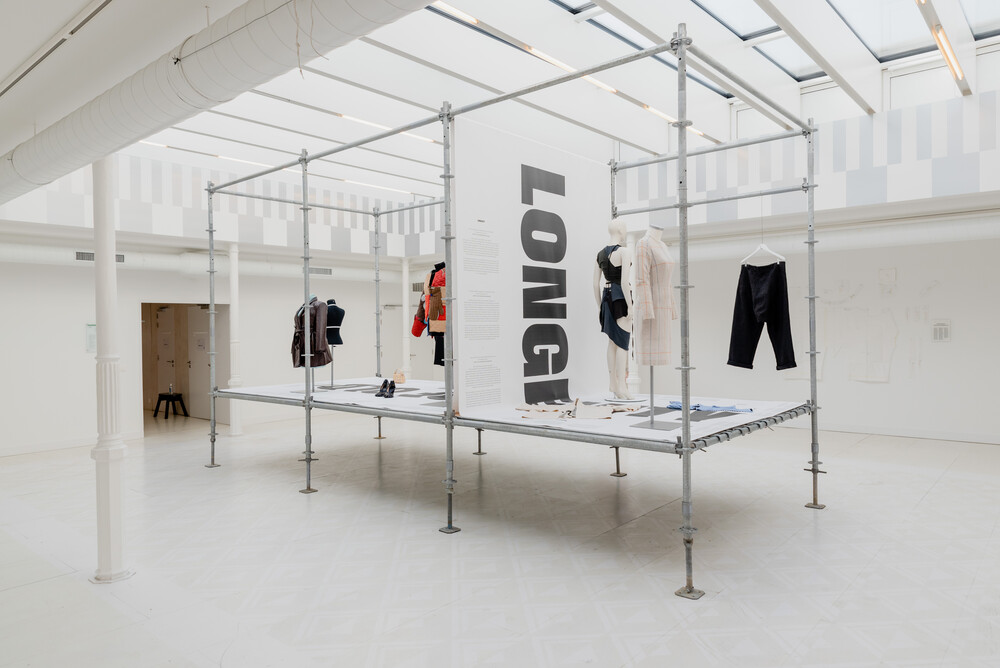
What challenges do you often encounter in your job?
"In the studio, we make a clear distinction between constraints and challenges. The constraints of time, budget and artworks’ conservation define a framework and determine the project. The challenges, on the other hand, are often human and political. The first challenge I encounter is the invisibility or incomprehension of technical skills that are essential to the cultural environment. Defining the role of each person involved in a project guarantees the quality of an exhibition. For example, I am not involved in the selection of objects to be exhibited, that is the role of the curator. As a scenographer, I concern myself with the space, circulation and hanging details. The second challenge I face has to do with ecodesign, or creating with what already exists. There's a persistent misconception that reusing is cheaper. The clauses in tenders suggest that existing materials should be reused and recycled, without providing the necessary budget. It's important to be aware that ecodesign takes time and money. Supporting ecodesign is more a political commitment than an economic one."

Do you have any advice or skills to share with future set designers?
"I think the best advice I could give is to accept that everyone has a role to play. And also to surround yourself with people. With people who listen and react. Because things never go according to plan! As soon as you start studying, be curious and look at other artistic disciplines, meet students who are photographers, graphic designers or typographers and work with them. That's what happened to me during my studies, I was lucky enough to meet lots of people from different departments with whom I still work today."
